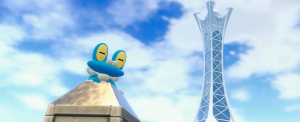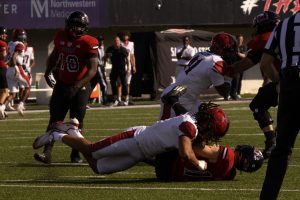UP & A funds pay Gargoyle debt
March 26, 1987
NIU’s University Programming and Activities has taken about $4,500 from its office budget to clear the 1985-86 Yearbook Association’s printing debt.
UPusA acting Director Michelle Emmett said in January she sent a letter to the credit department of Herff-Jones, Inc., printers of The Gargoyle, requesting a partial extension on the payment deadline until more books could be sold. When the company refused, giving NIU 30 days to clear the debt, Emmett said she informed Student Affairs and Purchasing, which is “ultimately liable for any purchases made,” of the March 26 deadline.
Earlier this month, Vice President for Student Affairs Jon Dalton requested $5,000 from the Student Association to relieve the deficit. However, SA Treasurer Lisa Schlepp said the SA senate never voted on Dalton’s request because UPusA picked up the debt.
“What happened is that she (Emmett) told me on Friday they (UPusA) are putting their account in a deficit to alleviate the bill this year. Otherwise, they would have had to pay us (SA) back out of next year’s budget,” Schlepp said.
Schlepp said since the issue was moot, she told the SA senate, “We don’t need to lend the money and we don’t need to discuss it further.”
Emmett said UPusA bought the 179 leftover books for $25 each to pay Herff-Jones. She said Mary Hermson, UPusA graduate assistant, will continue her efforts to sell the Gargoyles and money from future sales will be used to reimburse UPusA’s office budget.
Any additional reimbursement will come from the university, Emmett said. She said when monthly budget reviews are done, leftover money in the same line-item of another office’s budget can be used to pay back UPusA.
Gerardo Diaz, former Gargoyle editor, previously said the defunct yearbook association ran into trouble when it was zero-funded by the 1985 SA after the contract with Herff-Jones already had been signed by the Board of Regents.
Emmett said if future yearbooks are to be produced, there will have to be an “upfront financial base so the (yearbook) staff wouldn’t have to waste all of its time trying to come up with money instead of putting out a decent book.”
“Students were the ones who came up with this (yearbook), but the institution did not support them … I mean the SA and all parts of the institution,” she said.
Emmett said UPusA hopes to work with the Alumni Association to sell the remaining books because “the value of the books increases after the students graduate.”






